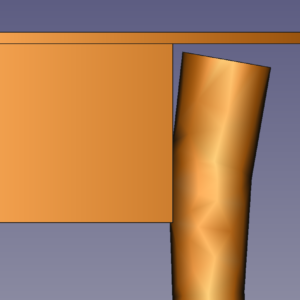Strong joinery for curved legs attached to the side of a carcas?
I’m unsure which joinery methods would provide the best strength between a curved tapered maple leg interfacing with a 3/4″ carcass made of mahogany. There will be about a 3″ x 1 1/4″ flat surface at the interface. I’m thinking the combination of a slip tenon reinforced above and below the tenon with 1/4-20 bolts anchored into threaded inserts in the maple would be ok. Other thoughts? The side of the carcass is 3/4″ thick with drawers inside. I wasn’t planning on using a stretcher, but perhaps a shelf or stretcher would be wise.
Please see the finished piece below, threaded inserts and slip tenons for the legs worked great with L tenons in the carcas for strength. This was really a challenging piece for me and was based on a photo I saw of this amazing design on Michael Singers website. I had great fun building it and learned how to fix a wide variety of mistakes!

















Replies
It would be helpful to know the overall configuration of the piece, particularly the relationship between the legs and the corner joints of the carcass.
Without a low shelf or stretchers, the moment forces of the legs into the carcass aprons could be significant, stressing not just the leg to apron joints but also the corner joints of the aprons.
The floating tenon joint you have proposed will have good long grain to long grain glue surfaces into the leg, but will be long to short grain through the apron, so as you have recognized, bolts or other means of strengthening will be important.
Yes thank you very much. The legs will be set in 2-3 inches from the corner on the side (6x18")of a carcass that has mitered corners strengthened by L tenons (a new experiment for me). Drawers (~4 1/2") will be in both faces of the carcass so there will be no back providing extra case strength. When thinking more about this it seems a shelf would be ideal to provide that lower stability to the legs even though it would only be coffee table height at 18" and size (24x38). The front and back faces will have a slight curve and curved drawer fronts to match. There will be stopped dados for dividers between the drawers which gives some added strength.
I think of the tenon giving the legs more rotational strength and the bolts primarily for attachment strength along with the tenons.